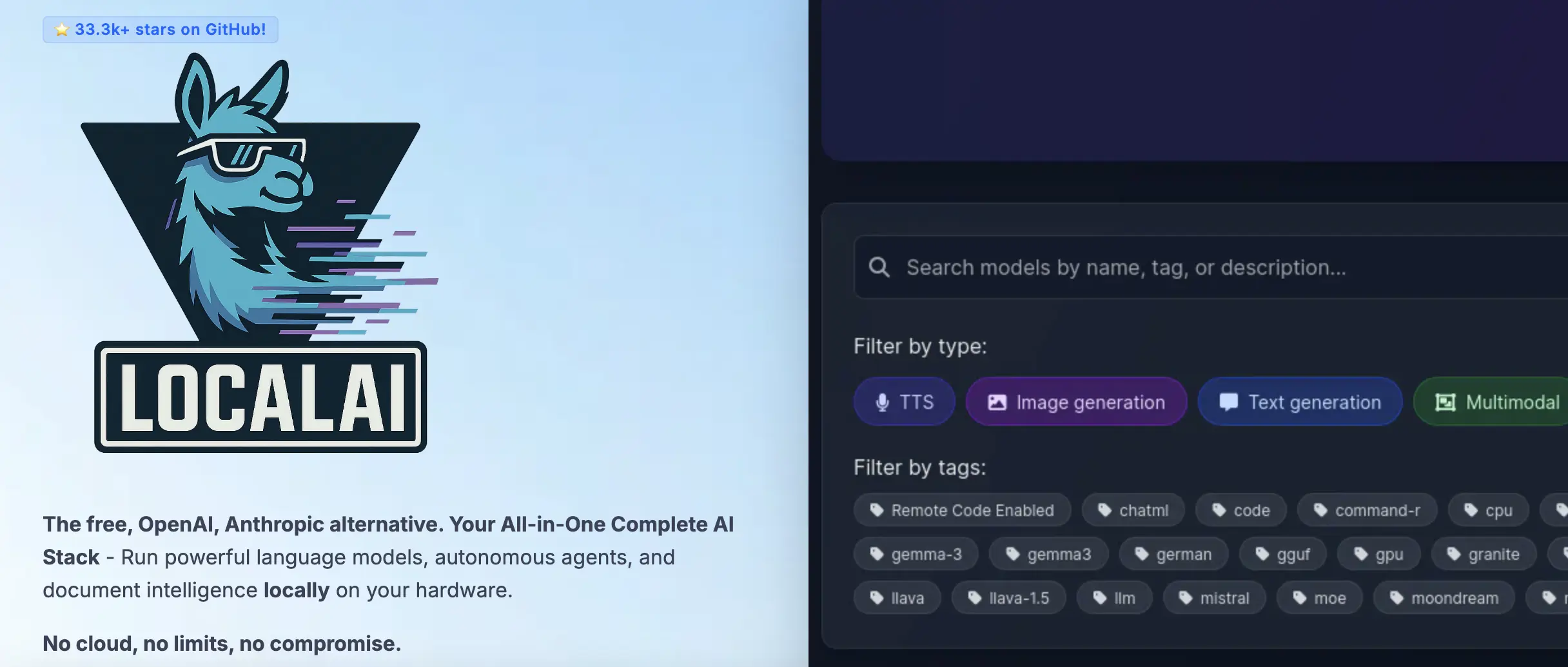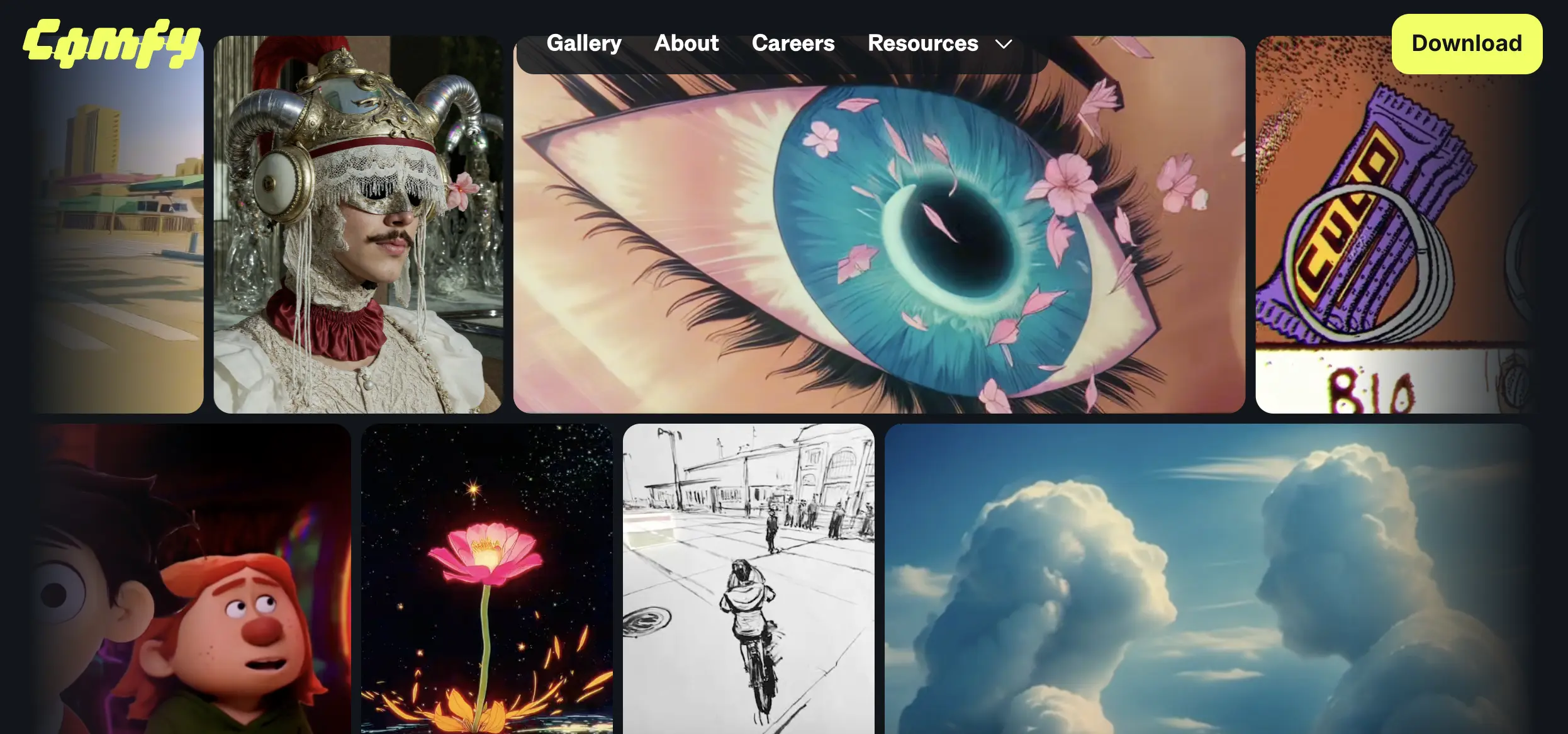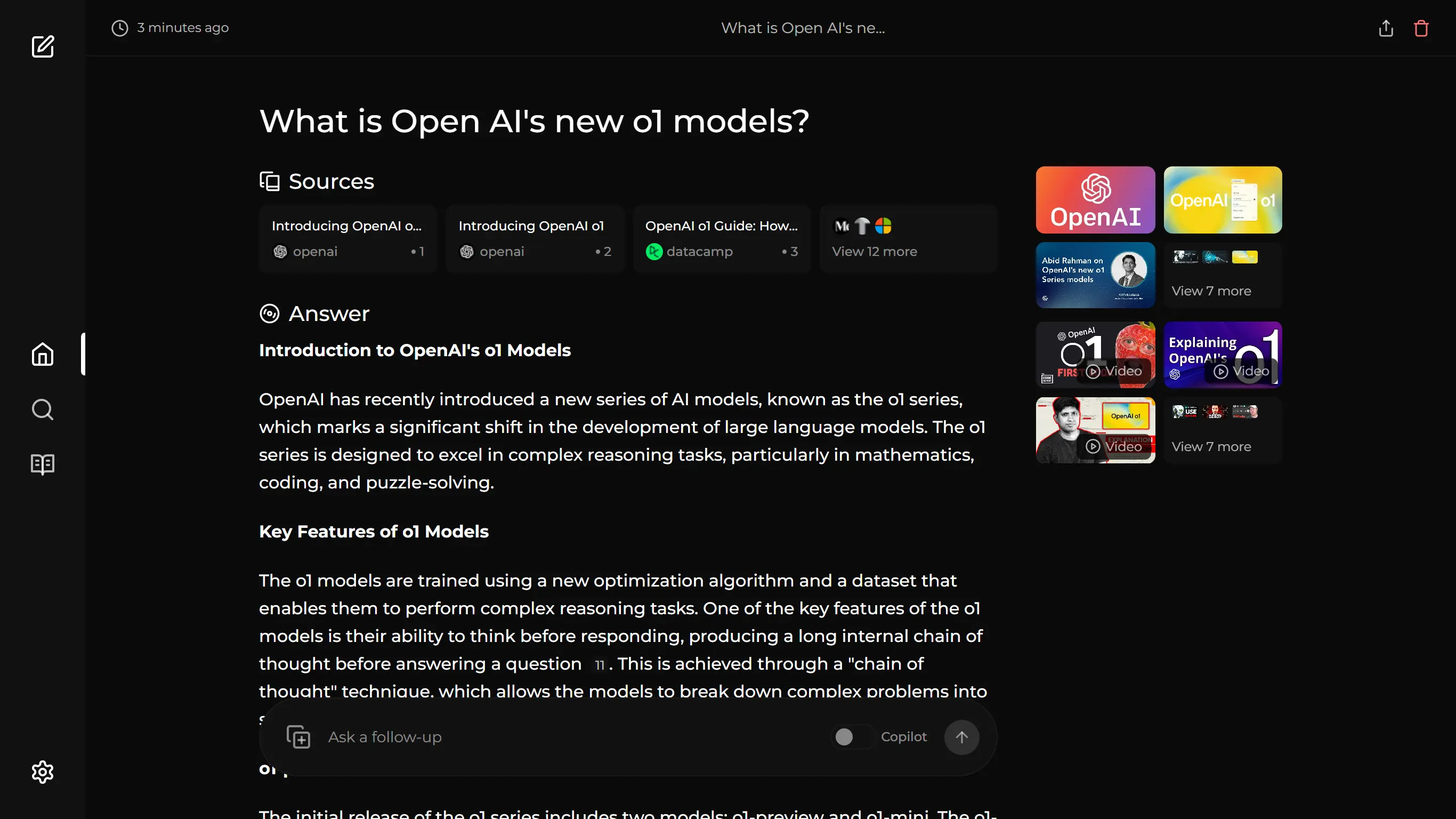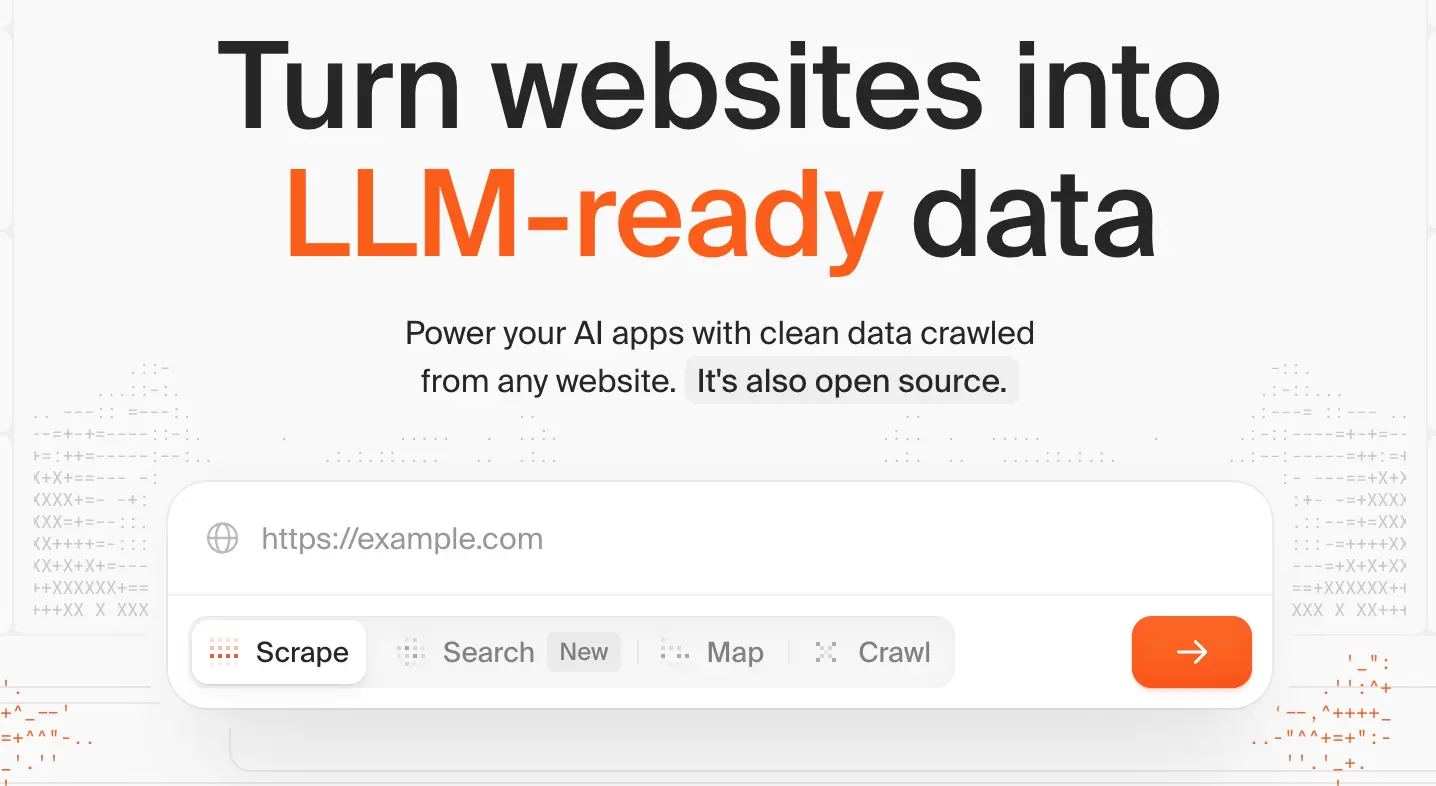
Star History Monthly September 2025 | Proprietary AI Alternatives
As proprietary AI softwares like ChatGPT, Midjourney, Perplexity, Claude, Devin, Lovable, VEO continue to dominate the headlines, open-source counterparts are not far behind. Developers and hobbyists wish to take back control: running models locally, avoiding vendor lock-in, and trying out infinite possibilities of customization.
This month, we highlight six outstanding projects shaping the "open vs proprietary" landscape:
| LocalAI | the self-hosted GPT API |
| ComfyUI | the power user’s Midjourney |
| Wan2.2 | cinematic video generation, open and hackable |
| OpenHands | the community’s Devin |
| Perplexica | the open-source Perplexity AI |
| Firecrawl | the building blocks of Lovable-like app builders |
LocalAI
→ OpenAI GPT API / Anthropic Claude
LocalAI is not a model, but an inference layer that wraps open models (LLaMA, Mistral, Gemma, Mixtral, Qwen) behind an OpenAI-compatible API. Developers can swap out OpenAI’s endpoint for LocalAI with minimal code changes.

- Strengths: API-compatible, multi-modal (text, embeddings, TTS, images), privacy-friendly, cost-saving.
- Limitations: Models still trail GPT-4o and Claude 3.5 in reasoning and creativity. Speed depends on hardware.
👉 The closest open-source alternative to GPT APIs. Not raw parity, but all about control, cost, and freedom.
ComfyUI
→ Midjourney / Runway
ComfyUI is a node-based workflow editor for diffusion models. Artists can wire together samplers, ControlNet modules, LoRA models, and video nodes like Lego blocks.

- Ecosystem: Hundreds of community plugins and nodes, covering 3D, video, and advanced controls.
- Community & Marketing: comfy.org acts as both product site and gallery, showcasing user creations and workflows. Messaging is clear: ComfyUI is for artists of the future.
👉 Midjourney is easy but closed. ComfyUI is harder to learn but infinitely more flexible. Its rise shows creators want control and community, not just outputs.
Wan2.2
→ Google DeepMind VEO 3
Developed by Alibaba, Wan2.2 is an ambitious open video generation model. It supports text-to-video, image-to-video, and speech-to-video.

- Community: Available on Hugging Face and ModelScope, integrated into ComfyUI workflows, with tutorials and guides shared widely.
- Strengths: Motion consistency, cinematic feel, multi-modal inputs.
- Limitations: Heavy GPU requirements, occasional artifacts, not plug-and-play.
👉 Proof that open video generation is real — and people are already experimenting with it despite the cost.
OpenHands
→ Devin
Devin sparked huge buzz as the “AI software engineer,” but it’s closed. OpenHands is the community’s open alternative.

- Features: AI coding agents that can plan, code, test, debug, and collaborate. Extensible and self-hostable.
- Why it matters: Proprietary dev agents are black boxes. OpenHands is transparent and hackable — designed as a collaborative teammate.
- Challenges: Early days, far from Devin’s demos, needs ecosystem growth.
👉 The first step toward an open Devin developers can actually use and extend.
Perplexica
→ Perplexity AI
Perplexica is an AI-powered search engine that serves as an open-source alternative to Perplexity AI. It combines web search with AI reasoning to provide comprehensive answers with sources.

- Features: Real-time web search, multiple AI model support (OpenAI, Ollama, Groq, Anthropic), focus modes for different search types, and chat-based interface.
- Self-hosted: Complete control over your search data and AI interactions, with Docker deployment for easy setup.
- Limitations: Requires technical setup, dependent on external search engines (SearXNG), and needs API keys for AI models.
👉 The open alternative to Perplexity AI — giving users control over their AI-powered search experience without vendor lock-in.
Firecrawl
(with Open-Lovable demo) → Lovable
Firecrawl is an open-source crawler that turns websites into clean Markdown or JSON, perfect for LLMs. To demonstrate its power, the community built Open-Lovable, a clone of Lovable’s instant app builder.

- Why it matters: Proprietary app builders hide their stack. Firecrawl shows that the building blocks for Lovable-style apps already exist in open source.
👉 Less about cloning Lovable directly, more about proving you can rebuild it with open infrastructure.
✨ That's September: six open-source projects pursuing giants, each with its own story. The polish may be lacking, but the creativity, vibrancy, and freedom of open source are impossible to ignore.


